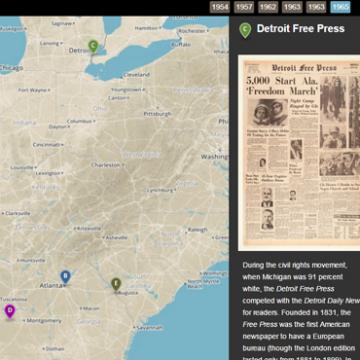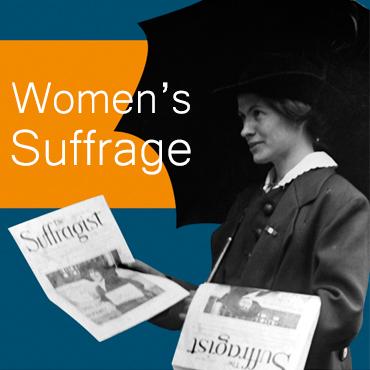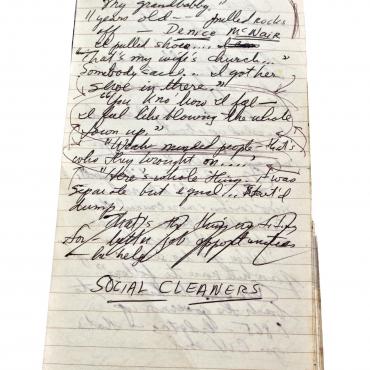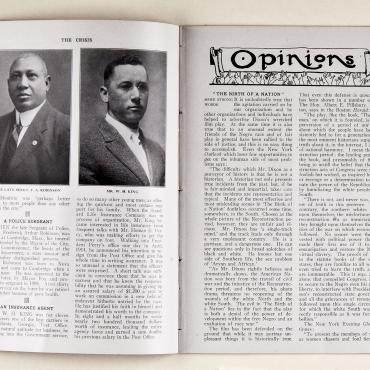
Civil Rights: Reporting Now
Students evaluate the strengths and weaknesses of different methods of communicating the news over time, then "remix" a civil rights report using modern technology.
Get even more great free content!
This content contains copyrighted material that requires a free NewseumED account.
Registration is fast, easy, and comes with 100% free access to our vast collection of videos, artifacts, interactive content, and more.
NewseumED is provided as a free educational resource and contains copyrighted material. Registration is required for full access. Signing up is simple and free.
With a free NewseumED account, you can:
- Watch timely and informative videos
- Access expertly crafted lesson plans
- Download an array of classroom resources
- and much more!
- Civil Rights
- Journalism
- 6-12
(Note: For more support, see expanded procedure in downloadable lesson plan.)
- In advance, review the sample worksheet at the end of this packet. You may wish to distribute it to students, as well. Share the link to the Civil Rights Media Map (below) with your students, or project the map on the board.
- Start by telling students they are going to investigate how new technology affects the news media.
- With students, create a list of ways reporters share events today.
- Use the NewseumED media map to locate historical civil rights front pages and determine what technology was available during the civil rights movement. Create a list and compare it to the list from previous step.
- Discuss how technology has changed since the civil rights movement.
- Complete the Why Use It? worksheet.
- Review the best practices list from the previous lesson.
- Last, students will complete the Remix It! worksheet to “translate” an article from the civil rights movement to one created with modern tools.
- Why Use It and Remix It worksheets (download), one each per student
- Do’s and Don’ts of Journalism handout (download)
- Internet access

CIVIL RIGHTS MEDIA MAP
CIVIL RIGHTS MEDIA MAP
Students share their projects and discuss their findings. Prompts include:
- What was hard about creating the reports?
- What was easy?
- Did students discover anything surprising, either about their event or about communicating the news?
- Reverse Translation: Pick a news story about a current civil rights issue that uses a form of media not available during the 1950s and 1960s (e.g., blog post, tweet, etc.). Create a news story like those in the front pages featured on the media map. What additional research do you have to do? What is easier about this process than that for creating a modern news story? What’s harder? For news producers, what are the advantages and disadvantages of using an older style and format? What about for news consumers?
- At the Newseum: Visit the “Civil Rights at 50” exhibit. Ask students to choose one of the featured events, and then retell the story of what happened using a modern communication tool: Twitter. Students should compose three to five tweets of 280 characters or fewer that communicate the key points of the story. Remind them that their tweets, though short, should still strive to follow the guidelines of ethical journalism and be accurate, fair and clear. Students may tweet in the Newseum, or write their tweets on poster paper in the classroom.
-
Common Core State Standards: CCSS.ELA-LITERACY.CCRA.R.7
Integrate and evaluate content presented in diverse media and formats, including visually and quantitatively, as well as in words. -
Common Core State Standards: CCSS.ELA-LITERACY.CCRA.W.6
Use technology, including the Internet, to produce and publish writing and to interact and collaborate with others.
-
NCSS C3 Framework: D2.Civ.14.6-8 and D2.Civ.14.9-12
6 - 8: Compare historical and contemporary means of changing societies, and promoting the common good. 9 - 12: Analyze historical, contemporary, and emerging means of changing societies, promoting the common good, and protecting rights. -
NCSS C3 Framework: D2.His.12.6-8 and D2.His.12.9-12
6 - 8: Use questions generated about multiple historical sources to identify further areas of inquiry and additional sources. 9 - 12: Use questions generated about multiple historical sources to pursue further inquiry and investigate additional sources. -
NCSS C3 Framework: D2.His.5.6-8 and D2.His.5.9-12
6 - 8. Explain how and why perspectives of people have changed over time. 9 - 12. Analyze how historical contexts shaped and continue to shape people’s perspectives. -
NCSS C3 Framework: D3.1.6-8 and D3.1.9-12
6 - 8: Gather relevant information from multiple sources while using the origin, authority, structure, context, and corroborative value of the sources to guide the selection. 9 - 12: Gather relevant information from multiple sources representing a wide range of views while using the origin, authority, structure, context, and corroborative value of the sources to guide the selection
-
National Center for History in the Schools: NCHS.US History.Era 8
Standard 1: The causes of the Great Depression and how it affected American society Standard 2: How the New Deal addressed the Great Depression, transformed American federalism, and initiated the welfare state Standard 3: The causes and course of World War II, the character of the war at home and abroad, and its reshaping of the U.S. role in world affairs
-
National Council of Teachers of English: NCTE.8
Students use a variety of technological and information resources (e.g., libraries, databases, computer networks, video) to gather and synthesize information and to create and communicate knowledge.
-
NCSS Curriculum Standards: NCSS 2
Learners examine the institutions, values and beliefs of people in the past, acquire skills in historical inquiry and interpretation, and gain an understanding of how important historical events and developments have shaped the modern world. -
NCSS Curriculum Standards: NCSS 3
Learners examine where people, places and resources are located, why they are there and why it matters. -
NCSS Curriculum Standards: NCSS 5
Students know how institutions are formed, maintained and changed, and understand how they influence individuals, groups and other institutions. -
NCSS Curriculum Standards: NCSS 6
Learners will develop an understanding of the principles, processes, structures and institutions of government, and examine how power and authority are or have been obtained in various systems of government. -
NCSS Curriculum Standards: NCSS 10
Learning how to apply civic ideals to inform civic action is essential to participation in a democracy and support for the common good.











































